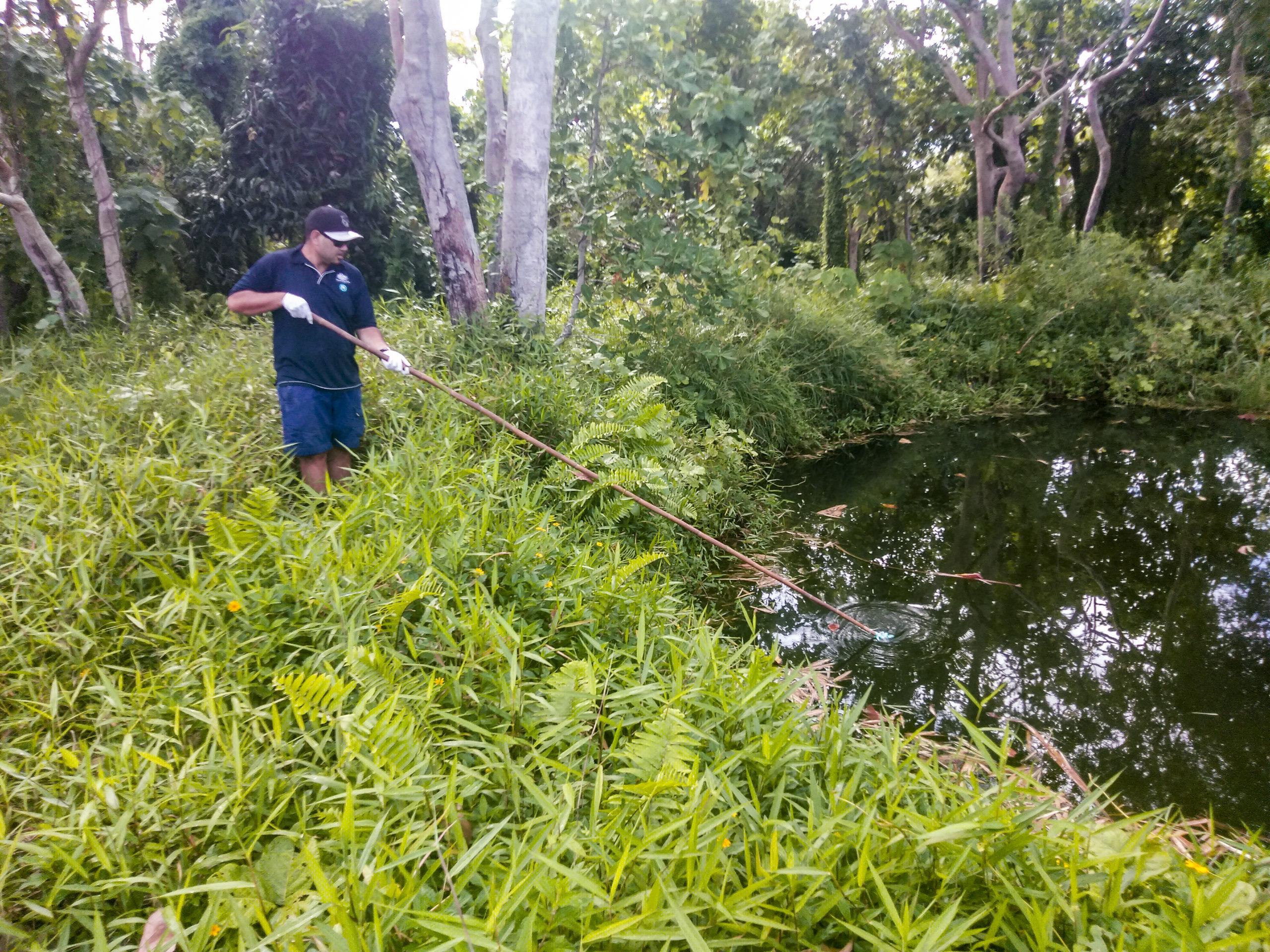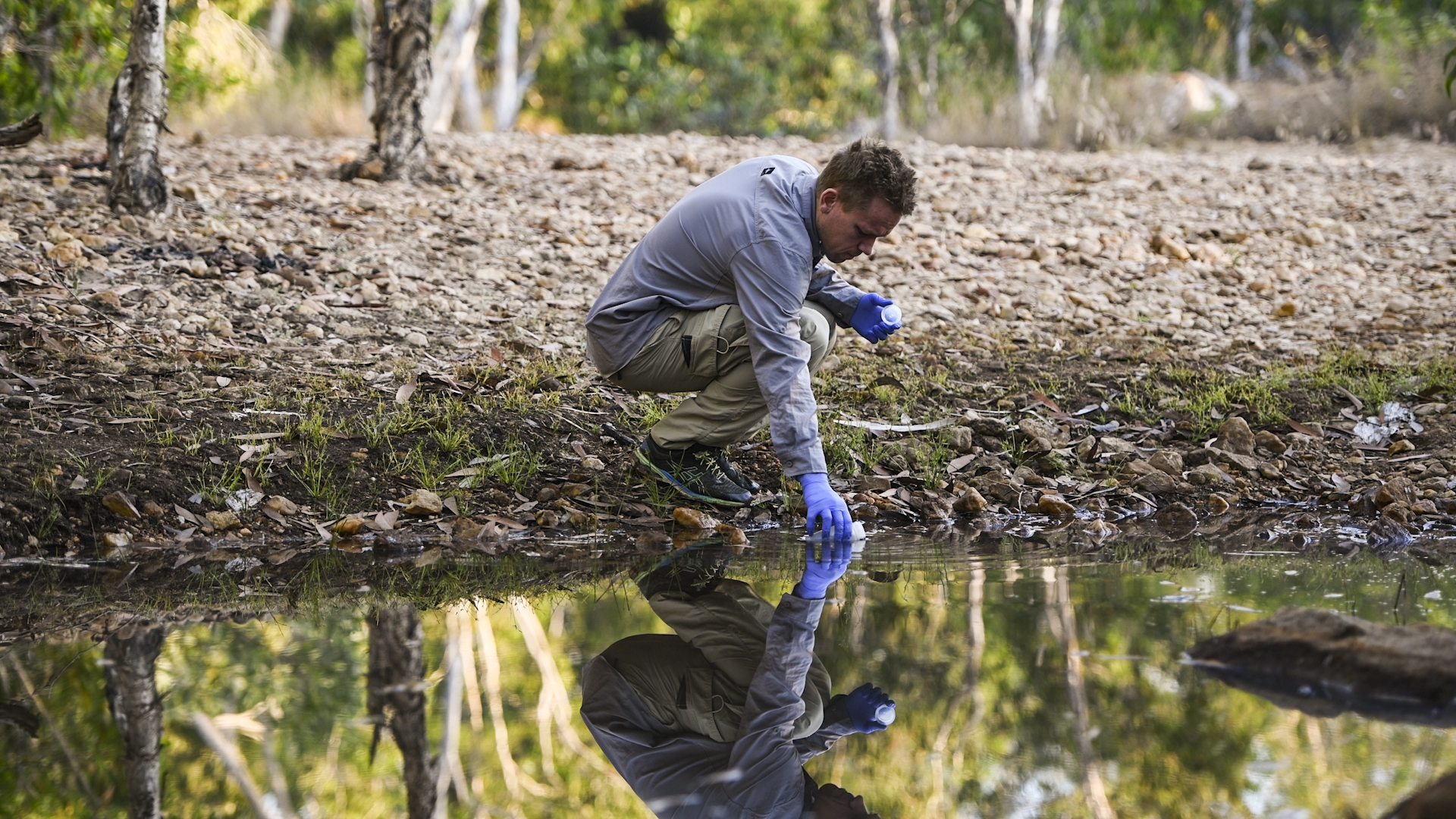31 July 2020
New Hub research conducted at James Cook University has found environmental DNA (eDNA) can be used to detect the presence of a single cane toad for a few days after it arrives at a new location, even if it only visited a water body for as little as five minutes.
The research, supported by the Australian Government’s Northern Australia Environmental Resources Hub and recently published in Environmental DNA, means that Indigenous rangers and citizen scientists in remote areas may be able to help track the invasion of cane toads by collecting a water sample from small ponds and puddles during the day, rather than searching for cane toads at night.

Using eDNA can help keep track of cane toads more efficiently than searching for cane toads at night, photo NESP Northern Hub.
Cane toads are lethal to Australia’s native animals when eaten, causing population declines of more than a dozen native predator species in northern Australia, including the Northern Quoll and large reptiles like goannas.
Cane toads have spread through Queensland and the Northern Territory and are rapidly advancing through the Kimberley region in Western Australia.
Tracking the arrival of cane toads into a new area is a challenge. They are active at night, and the low number of cane toads at the invasion front means they are difficult to detect using traditional survey methods that rely on either seeing, hearing or catching an animal.
– Dr Cecilia Villacorta-Rath, James Cook University
In recent years, analysing water samples for a species’ eDNA has proven to be a powerful tool for detecting difficult-to-find species. Animals regularly shed their DNA in the environment, through skin cells, slime, urine and faeces.

Torres Strait Regional Authority, Land and Sea Management Unit Ranger, Stephen Foster collecting an eDNA sample from a Badu Island community water source, photo Torres Strait Regional Authority.
Although cane toads don’t live in the water, they do need to come to water once a day to hydrate, explained co-researcher Professor Damien Burrows.
“The average time it takes for a cane toad to hydrate is five minutes. We wanted to know if we could use eDNA to detect a single cane toad that might visit a waterbody for five minutes and then leave,” he said.
The answer is yes. We found that eDNA is very sensitive for detecting a cane toad that only visits a very small puddle for a very limited time.
– Professor Damien Burrows, Project leader, James Cook University
The researchers placed individual cane toads in outdoor aquariums holding either 200 or 800 litres of freshwater, to replicate the small and often temporary water bodies that cane toads use to hydrate. They also tested how long cane toad eDNA persists in water at temperatures of 25, 30 and 35 degrees Celsius.

We can track the invasion of cane toads by collecting a water sample from small ponds and puddles during the day, photo NESP Northern Hub.
They found that cane toad eDNA persisted in the water for two or three days after a toad had visited, regardless of the water’s temperature.
If we detect cane toad eDNA in a water sample, we know that a toad has visited that water body sometime within the past one to three days.
– Dr Cecilia Villacorta-Rath
JCU and the Torres Strait Regional Authority (TSRA) have a long-standing mutually beneficial partnership spanning many years. TSRA provides invaluable assistance to connect JCU scientists with Torres Strait communities.
TSRA Chairperson Mr Pedro Papau Stephen said the technique is already helping them monitor cane toads.
Indigenous rangers collect water samples from islands across the Torres Strait which we send to JCU to test for cane toad DNA. We are trying to stop cane toads from reaching the outer islands so being able to tell from a water sample whether a cane toad has been in a creek is another tool in our efforts to stop the spread of toads.
– Mr Pedro Papau Stephen, Torres Strait Regional Authority
Want to know more about the Resilient Landscapes Hub's activities and our research into practical solutions to environmental problems? Stay informed about activities, research, publications, events and more through the Hub newsletter.
"*" indicates required fields